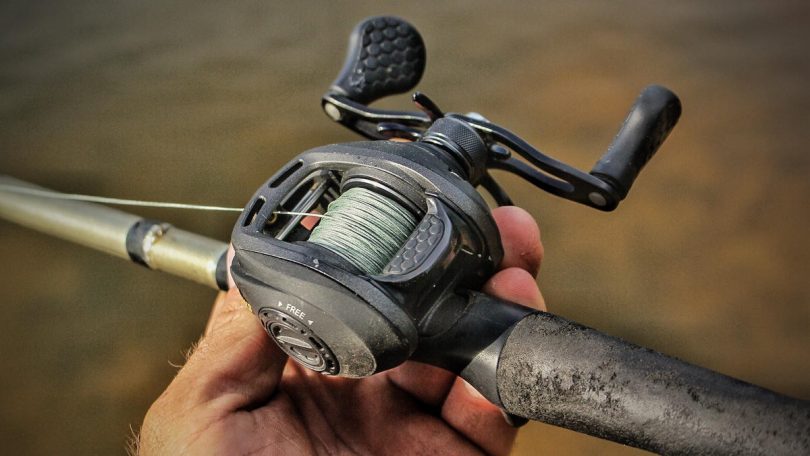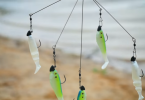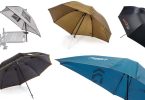Most anglers want to strive hard to get the skill of setting the hook. The fishing rod has several movements about which an angler is not aware. They need to learn the movements like jigging and twitching. The anglers sometimes lose their fish just because of not setting the hook properly. If one wants to be successful in a hook set, they must do practice and give most of the time to water to have a mastery of hooking.
The hook setting requires the angler to stand stably in a position of the legs are shoulders apart and the knees are bent slightly. Balance and stability are major concerns while setting the hook. When fishing, exerting enough force with your body matters a lot; the upper body must need to torque, and you must aggressively snap the rod. If your body is not stable at the base, you will lose balance, which would not be the proper stance to exert force.
Your upper body must feel relaxed, but you might need to spring at any moment, so be ready for such a situation. The biggest mistake fishing newbies make is not keeping their elbow tight to the side. It would make the hook lose a lot of power, and the hook that comes out of this situation is a less powerful hookset. An angler has to keep his elbow tight to move the line, rod, or hook to get the powerful hookset.
How to Set the Hook
The hook setting depends upon the fish a lot; what type of bait does a fish need at what time is something fishy to know about. The bait or lure varies with the type of fish, so one needs to be too attentive and have a master in fishing to know such things. No doubt, newbies also work out a lot in finding the best bait for their better fishing experience, but the practice also makes the angler learn all these things conveniently.
Fly Fishing
If you are fly fishing, you need to follow the 3 different ways to set the hook.
When these 3 ways come in exchange, it is the major challenge that an angler needs to play with.
-
Freshwater Fly Fishing
In freshwater fishing, you would find many fish belonging to different species. If you are trying to feel a bite with a fly rod in freshwater, you need to lift the fly line with one hand and hold the rod in the other hand.
When an angler gets the bite on its lure or bait, do nothing in this situation. It is hard for the angler to do anything if an angler is not used to facing this condition. The training is the most important factor that, is the time requirement.
This moment would take 3-5 seconds to end; once the angler has done it rightly, he could easily lift the rod and begin to reel in.
-
Saltwater Fly Fishing
The rules for saltwater fishing vary as compared to freshwater fishing. In saltwater fishing, it is against the law to lift the rod. If an angler is used to trout fishing and suddenly gets into the saltwater, everything here is quite different. One needs to take separate training for saltwater and freshwater fishing.
Coming to saltwater fishing from freshwater fishing is sometimes overwhelming, but you need to learn everything before setting a hook for saltwater fishing.
-
Using a Strip Set
A strip set is a major thing you need when setting the hook in saltwater. Keep stripping, and when stripping your fly during fishing, you will get the bite; do not lift the rod, and to properly set the hook, keep on pulling the fly line.
-
Bait Fishing
During bait fishing, the angler has to wait and ensure that the fish has the hook or bait in its mouth. Before setting the hook and reeling in, you must get confirmation of having the fish hooked. This strategy demands patience and good timing to get everything clear; a big difference is whether the angler uses dead bait, live bait, J-hook, circle hook, or a bobber
How to Set by Using Different Hooks
Several hooks are available in the marketplace to utilize for different purposes. When it comes to fishing, the hooks make the fishing easy and assist in capturing quickly by adding bait on the hook; this makes it work even better.
-
J-Hook
As the name suggests, the hook is a J-shaped versatile and usually common during fishing. You can use the hook with any bait and get incredible results. You can add live or dead bait to make the attraction for the fish. The primary concern is that the hook must reach the mouth of the fish; going deep into the mouth would be harmful. It is a mastery to keep the hook in the fish’s mount without swallowing. It would help if you stuck into the fish when you felt a bite. Lifting the rod into the fish and winding would work well, as it will pull the hook in the mouth, making a good setting.
-
Circle Hook
The circle hook is convenient as it does not reach the fish’s stomach; it is just set in the corner of the fish’s mouth and makes the fish capture easily. The main point is that the bait could remain inside the fish for as long as possible without fretting damage.
-
Casting Artificial Lures
During spin fishing, artificial lures play a vital role. Setting the hook depends upon the type of hook you are using for your lures. Rather it relies on the kind of fish you want to capture. Most of the time, the hooks might be J-hooks or treble hooks.
-
Treble Hooks
Fishing is not too tricky while using the treble hook. It makes the fish capturing easy and takes great advantage to add the lure to the treble hook. The treble hook has 3-9 hooks on the lure compared to the other methods in which a single hook involves. To obtain a sturdy hook set by using treble hook baits, the only thing you need to do is to tight the line that involves winding. When a fish eats the lure, wind a few times, and the hook will get its proper place and set correctly.
Also Check: Best Catfish reel.








